There is a relatively simple solution to this problem, which would be to make some space for a special "splashscreen" state in your code. It would almost be ninja coding to implement it, although in this case as you are learning it's not taking shortcuts but more like climbing a new step in the learning stairwell. Here's a proof of concept which shows what I'm speaking about:
// this boolean keeps track of the current game state: splashscreen or not
boolean splashScreen = true;
void setup() {
size(600, 400);
}
void draw() {
background(0);
// if the game has yet to start, show the splashscreen
if (splashScreen) {
drawSplashScreen();
} else {
playGame();
}
}
// this method draws the splashScreen
// it could be coded in the 'draw()' method, but it's easier to read this way
void drawSplashScreen() {
textAlign(CENTER);
textSize(30);
fill(255);
text("THIS IS THE SPLASHSCREEN \n click anywhere to play the game", width/2, height/2);
}
// this method contains everything your game loop needs to work
void playGame() {
textAlign(CENTER);
textSize(40);
fill(200, 0, 200);
text("YOU ARE CURRENTLY \n PLAYING THE GAME", width/2, height/2);
}
void mouseClicked() {
if (splashScreen) {
splashScreen = !splashScreen;
}
}
Here you have 2 game states: the splash screen and the game itself, but you could implement more than just these two. There's a design pattern called Finite State Machine that would be just perfect for your needs. Although you already have everything you need to code your assignment, let me explain a little further:
A FSM let you determine the context which can lead to another context and limit some actions to it's own context. A good example of this is Mario in the original Super Mario Bros game: when he's small, getting a magic mushroom will transform him into Super Mario. When he's Super, getting a flower will transform him into Fire Mario. But while small, getting a flower will only make him into Super Mario, not Fire Mario (in the ooold first game at least). That's because each one of these states have rules, and he cannot just jump from one to the other without regard for these.
Your game's logic has it's own rules too: you have the first screen with the "start" button. When this button is clicked, there's a second state where it says "click anywhere to play the game". If the user clicks, then the game itself starts. That makes for 3 states (3 screens if you like) where every state has it's own set of rules - which we often call 'business rules'.
We could schematize this assignment like this:

And here's the skeleton code that would implement such a game, including a bonus rectangle collision detection method:
// the game states are as follow:
// 0 is welcome screen with button
// 1 is click anywhere screen
// 2 is the game itself
int gameState = 0;
void setup() {
size(600, 400);
}
void draw() {
background(0);
// let's use the right game state here
switch(gameState) {
case 0:
drawWelcomeScreen();
break;
case 1:
drawClickAnywhereScreen();
break;
case 2:
playGame();
break;
}
}
void drawWelcomeScreen() {
fill(0, 0, 100);
rect(100, 100, 400, 100);
textAlign(CENTER);
textSize(30);
fill(255);
text("Click here to play", 300, 150);
text("THIS IS THE WELCOME SCREEN", width/2, 50);
}
void drawClickAnywhereScreen() {
textAlign(CENTER);
textSize(30);
fill(255);
text("Click anywhere to play the game", width/2, height/2);
}
void playGame() {
textAlign(CENTER);
textSize(40);
fill(200, 0, 200);
text("YOU ARE CURRENTLY \n PLAYING THE GAME \n click anywhere to go \n back to the welcome screen", width/2, height/2);
}
void mouseClicked() {
// now this will be more complicated, because you'll want to deal with clicks differently depending on the game state
// which kinda answers the question as how we'll deal with this issue: same as in the 'draw()' method
switch(gameState) {
case 0:
// if the click's coordinates are in the rectangle's coordinates (use math here, or a collision method)
// (in fact, use math pretty much everywhere)
// (I hope you like math)
// anyway here's an old collision method I paste everywhere on SO, feel free to steal it and improve on it!
// I wrote it as a student to deal with pretty much the same stuff that you're going through
if (intersect(100, 100, 400, 100, mouseX, mouseY, 1, 1)) {
gameState = 1;
}
break;
case 1:
gameState = 2;
break;
case 2:
gameState = 0;
break;
}
}
// enter the xy coordinates, the width and the heigh of 2 rectangle shapes and it'll return true if they intersect
boolean intersect(float x1, float y1, float w1, float h1, float x2, float y2, float w2, float h2) {
boolean checkX = false;
boolean checkY = false;
if ( (x1<x2 && (x1+w1)>x2) || (x1<(x2+w2) && (x1+w1)>x2+w2) || (x1>x2 && (x1+w1)<(x2+w2)) ) {
checkX = true;
}
if ( (y1<y2 && (y1+h1)>y2) || (y1<(y2+h2) && (y1+h1)>y2+h2) || (y1>y2 && (y1+h1)<(y2+h2)) ) {
checkY = true;
}
return checkX && checkY;
}
I hope I'm not confusing you with all this material. I'll try and keep an eye out for any question you may have about these things.
Good luck and have fun!
